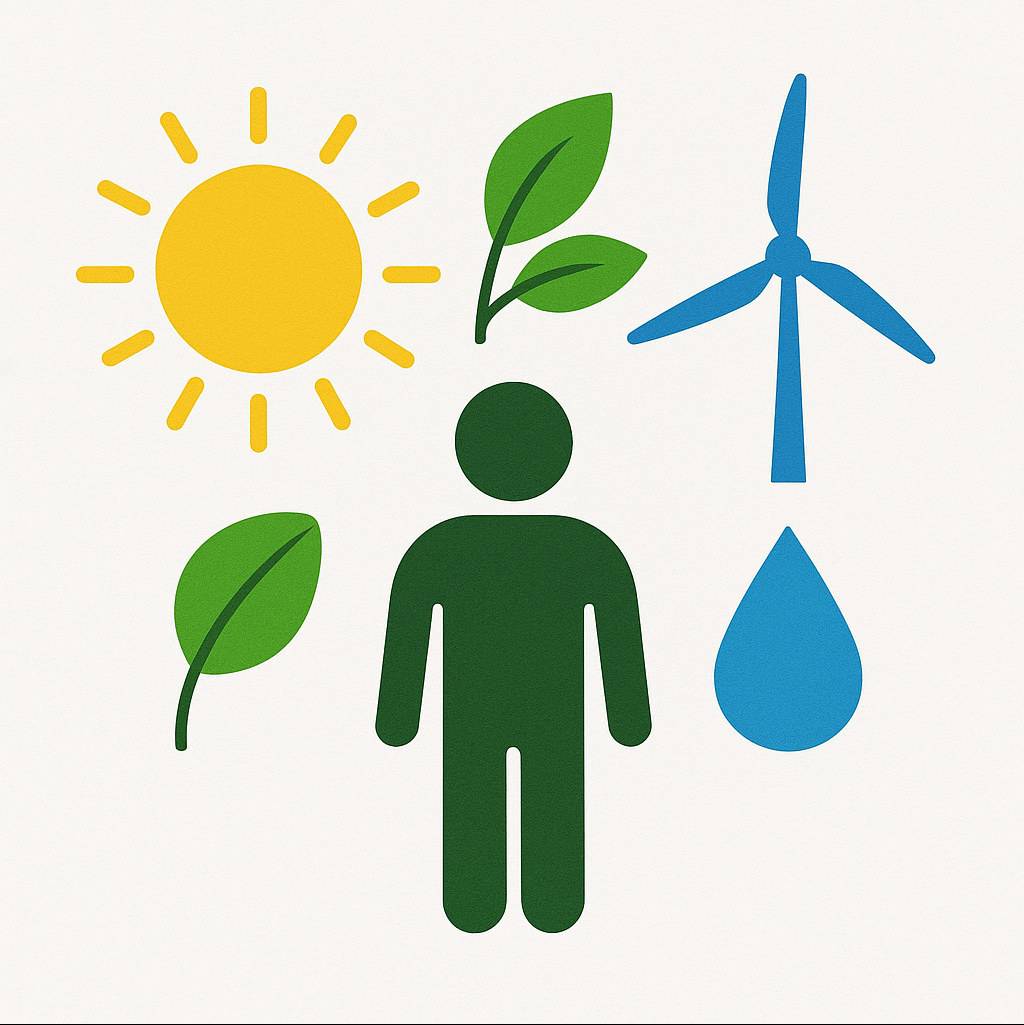With rising environmental concerns and energy bills, turning to natural energy sources for everyday living is both practical and sustainable. From heating homes to fueling bodies, energy surrounds us in multiple forms. In this blog, we explore 5 natural sources of energy, how they power our lives, and how you can integrate natural energy sources into your daily routine.
What Are Natural Energy Sources?
Natural energy sources are energy types derived from nature, often renewable, clean, and sustainable. These include:
- Solar Energy
- Wind Energy
- Hydropower (Water)
- Geothermal Energy
- Biomass and Food-Based Energy
Whether it’s light from the sun or energy from food, these sources play critical roles in modern life. They’re used in homes, industries, and even in fueling the human body.
5 Natural Sources of Energy
Let’s name 5 natural sources of energy and describe how they’re used in everyday life:
1. Solar Energy
Captured through solar panels, this energy is used to:
- Heat water
- Power household appliances
- Light homes and streets
What is solar energy used for in everyday life? From cooking in solar ovens to charging phones, it’s the most accessible and cleanest source.
2. Wind Energy
Using wind turbines, we can generate electricity, especially in open or coastal areas. It’s a popular non-conventional energy source.
3. Hydropower (Water)
Running water powers turbines to generate electricity in dams. It’s a renewable energy source used for everyday activities, like powering homes and factories.
4. Geothermal Energy
What is geothermal energy used for in everyday life? In volcanic areas, heat from the Earth warms buildings, greenhouses, and even water systems.
5. Biomass (Including Food)
Biomass energy comes from plants, food waste, and even wood. Plus, food is our source of energy—fueling the human body every day.
Which Energy Sources Are Used for Domestic Purposes in Our Homes?
Around the world, these sources are widely used:
- Natural gas (for cooking and heating)
- Electricity (from hydropower or solar)
- Biomass (wood stoves in rural areas)
- Solar panels (increasingly common in off-grid areas)
Using Natural Energy in Daily Life: Practical Ways to Power Your World
Natural energy sources aren’t just powering solar farms or wind turbines—they’re becoming a central part of everyday living. Dr. Barbara O’Neill emphasizes the importance of harnessing nature’s energy in simple, affordable, and sustainable ways at home, at work, and even in personal routines.
Here are some accessible ways to use natural energy sources for everyday living:
Solar Energy for Daily Use
Install solar panels to power your water heaters, lights, or home appliances. Even portable solar chargers can be used for phones and laptops. Passive solar design, like letting sunlight warm your home, is another way to cut down on energy bills.
Wind and Air Flow
Using natural ventilation by opening windows strategically reduces reliance on air conditioning. Ceiling fans, wind catchers, and breathable architecture can enhance this low-tech, energy-free solution.
Thermal Energy for Cooking and Comfort
Use solar cookers or heat-retaining cookware to reduce electricity or gas use. In colder months, maximize thermal energy by trapping heat inside using insulation and heavy curtains.
Water as an Energy Source
Hydropower might be industrial-scale, but you can still tap into gravity-fed water systems or collect rainwater to reduce the energy needed for irrigation or home cleaning.
Human and Environmental Energy
Dr. Barbara O’Neill also highlights the role of the body’s own energy system—daily walking, stretching, and spending time in the sunlight boosts your natural circadian rhythm, improving both energy and immunity.
Everyday Eco-Energy Habits
- Dry clothes under the sun instead of using dryers
- Use hand grinders, manual juicers, or foot-pumped water systems
- Optimize home layout to benefit from natural light and airflow
By integrating these practices, you’re not just reducing your carbon footprint—you’re aligning your life with how energy naturally flows on Earth.
Energy in Different Fields
Let’s describe the uses of energy in different fields:
- Domestic: Heating, lighting, cooking
- Agriculture: Pumping water, operating machines
- Healthcare: Running diagnostic tools
- Education: Powering schools and devices
- Transportation: EVs powered by solar or wind-generated electricity
Energy for everyday use is everywhere—from the phone in your hand to the food you eat.
Conclusion: Embrace Nature’s Power
Natural energy sources examples like the sun, wind, and food are powerful tools in building a sustainable, healthier lifestyle. Whether you’re switching to solar power or choosing energy-rich foods, every small step helps.
Let’s return to nature—not just for environmental protection, but for energy efficient living that empowers our homes, bodies, and planet.



